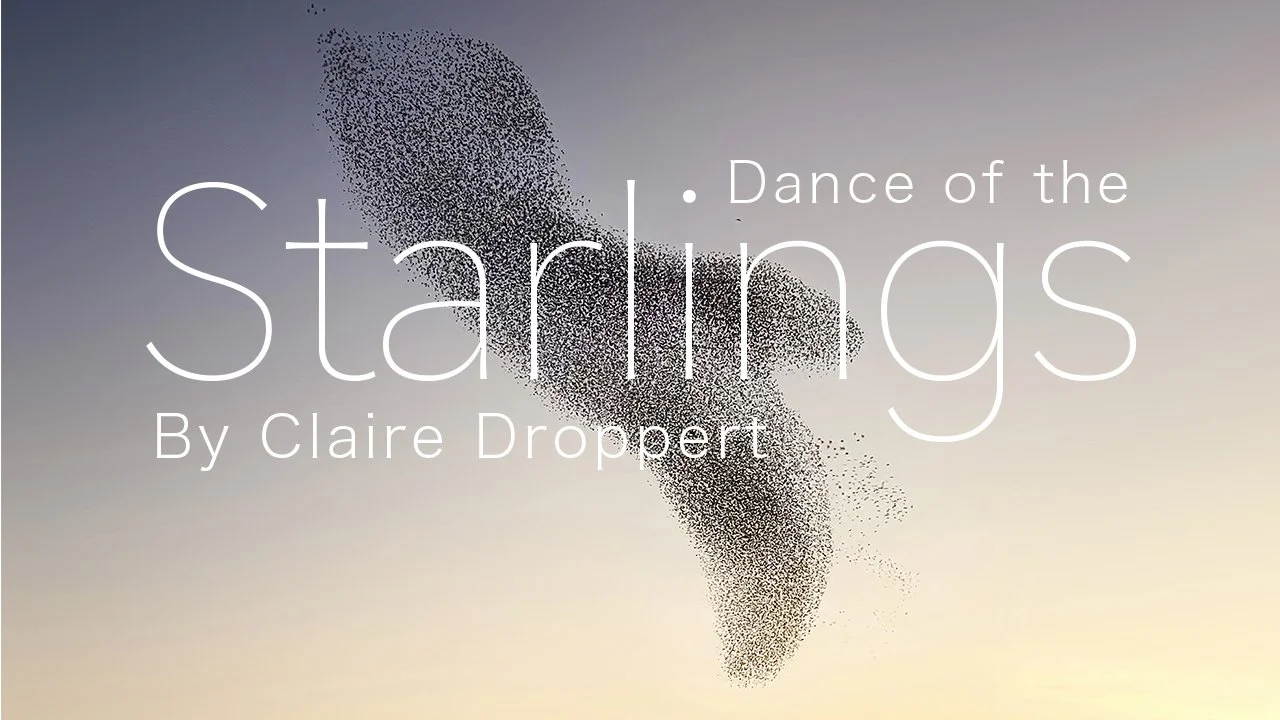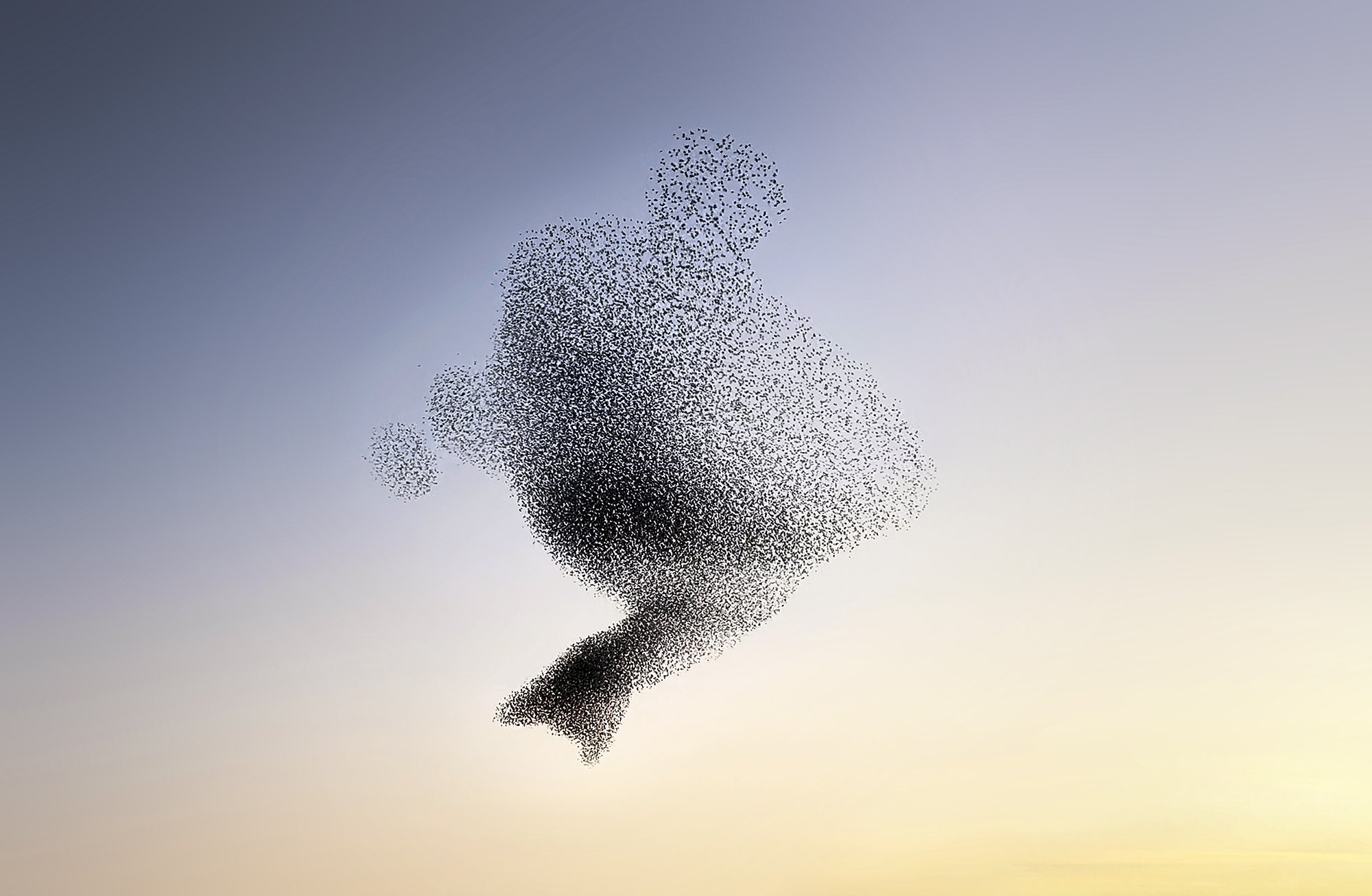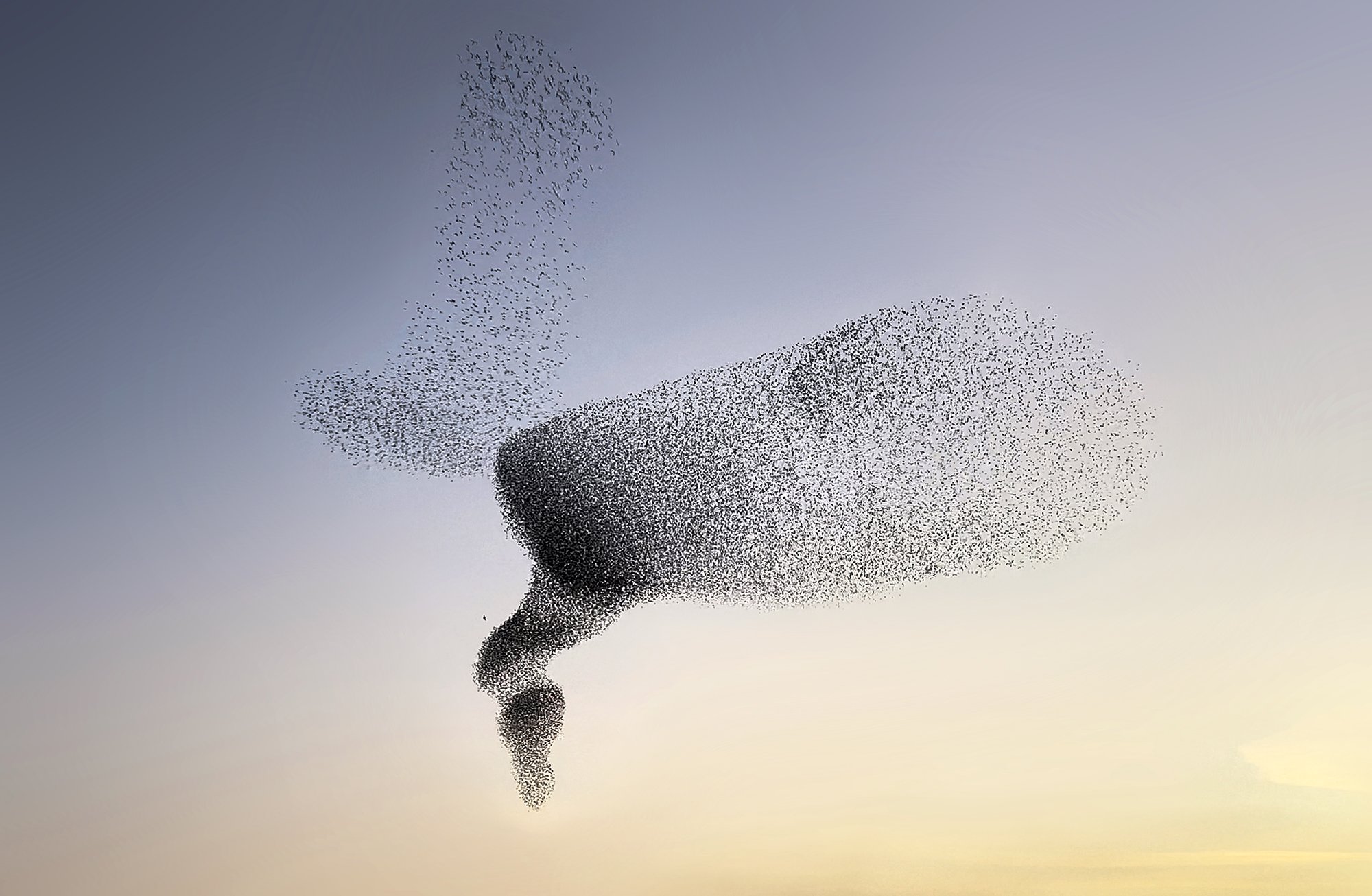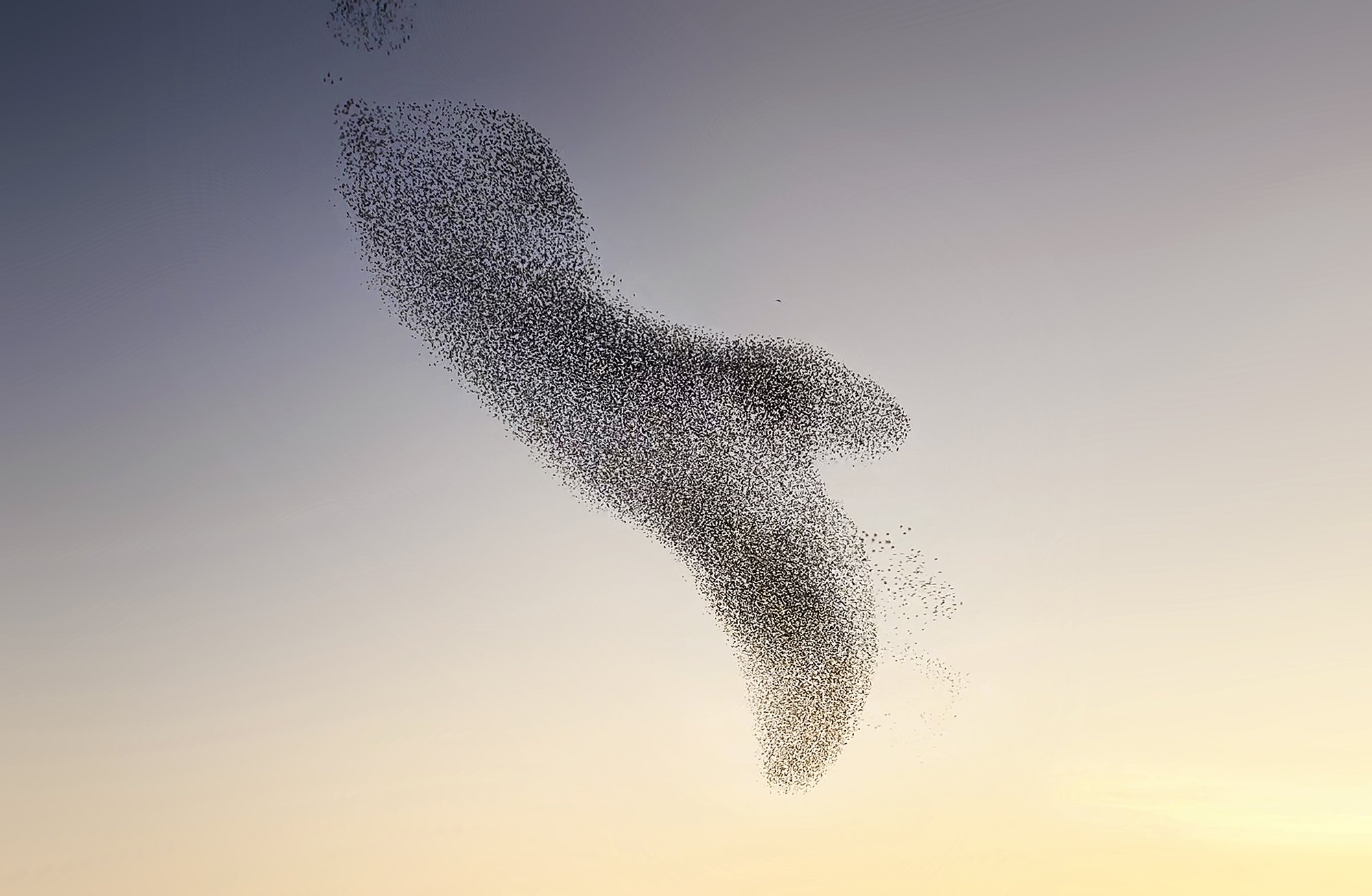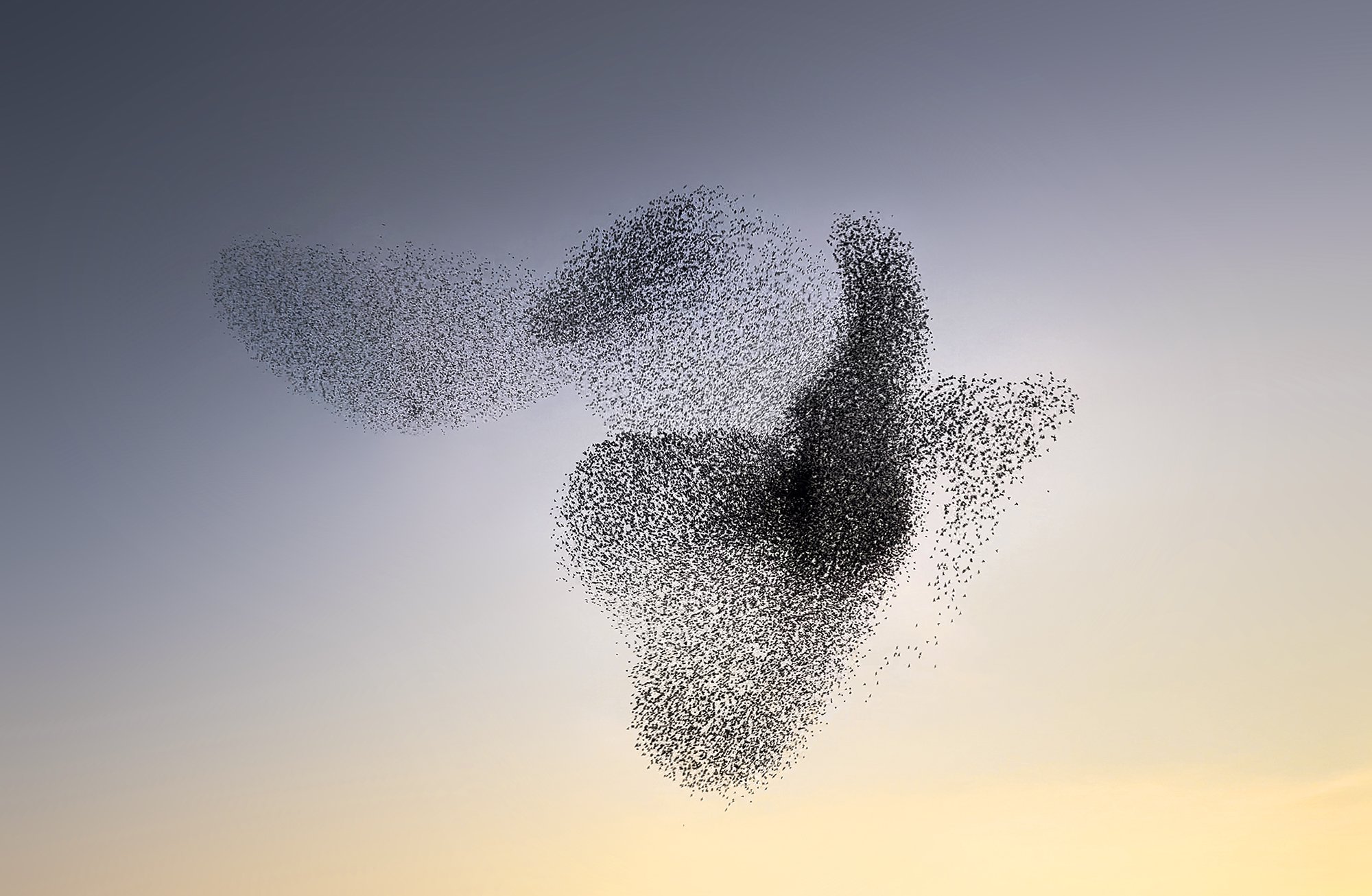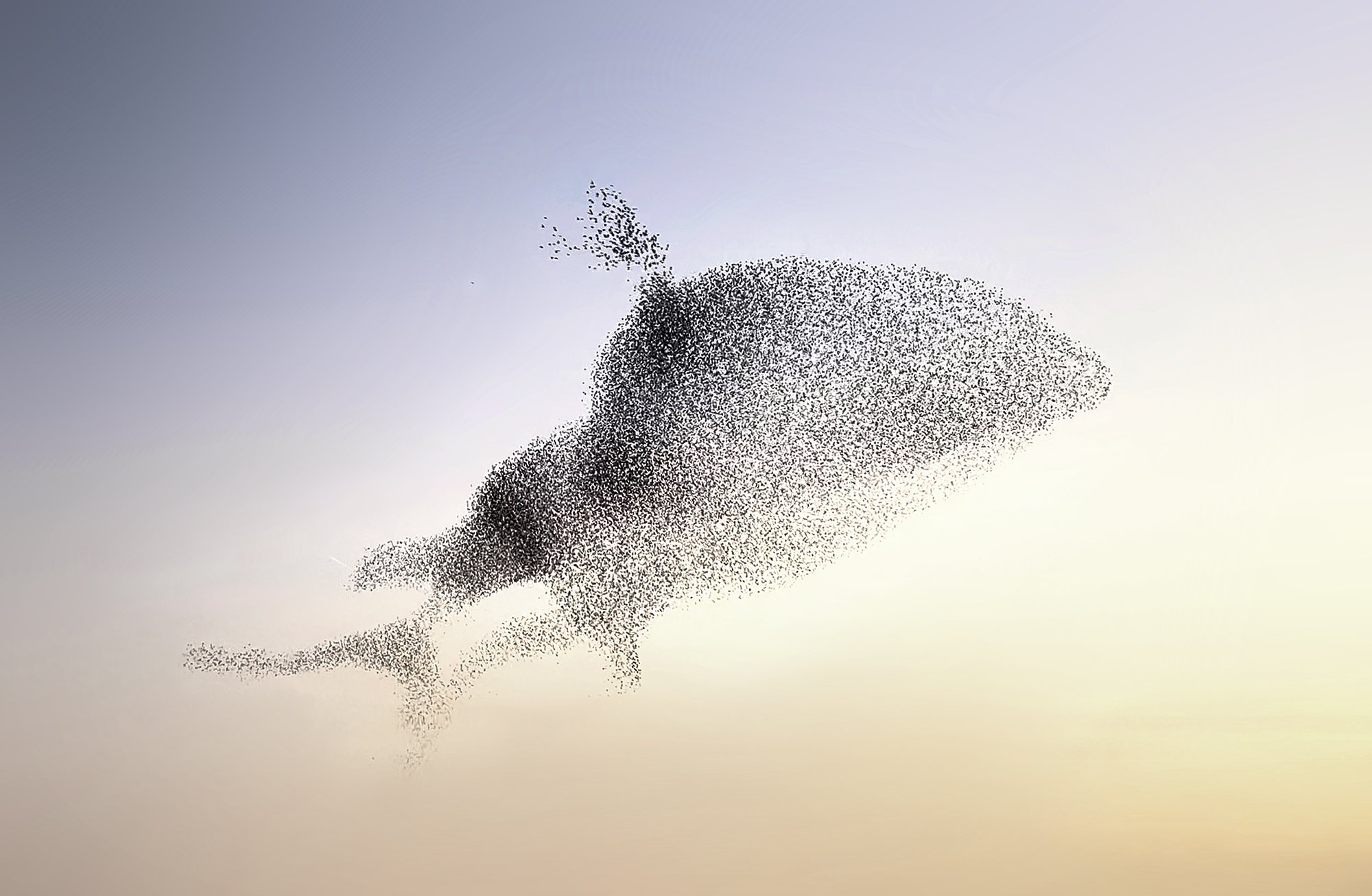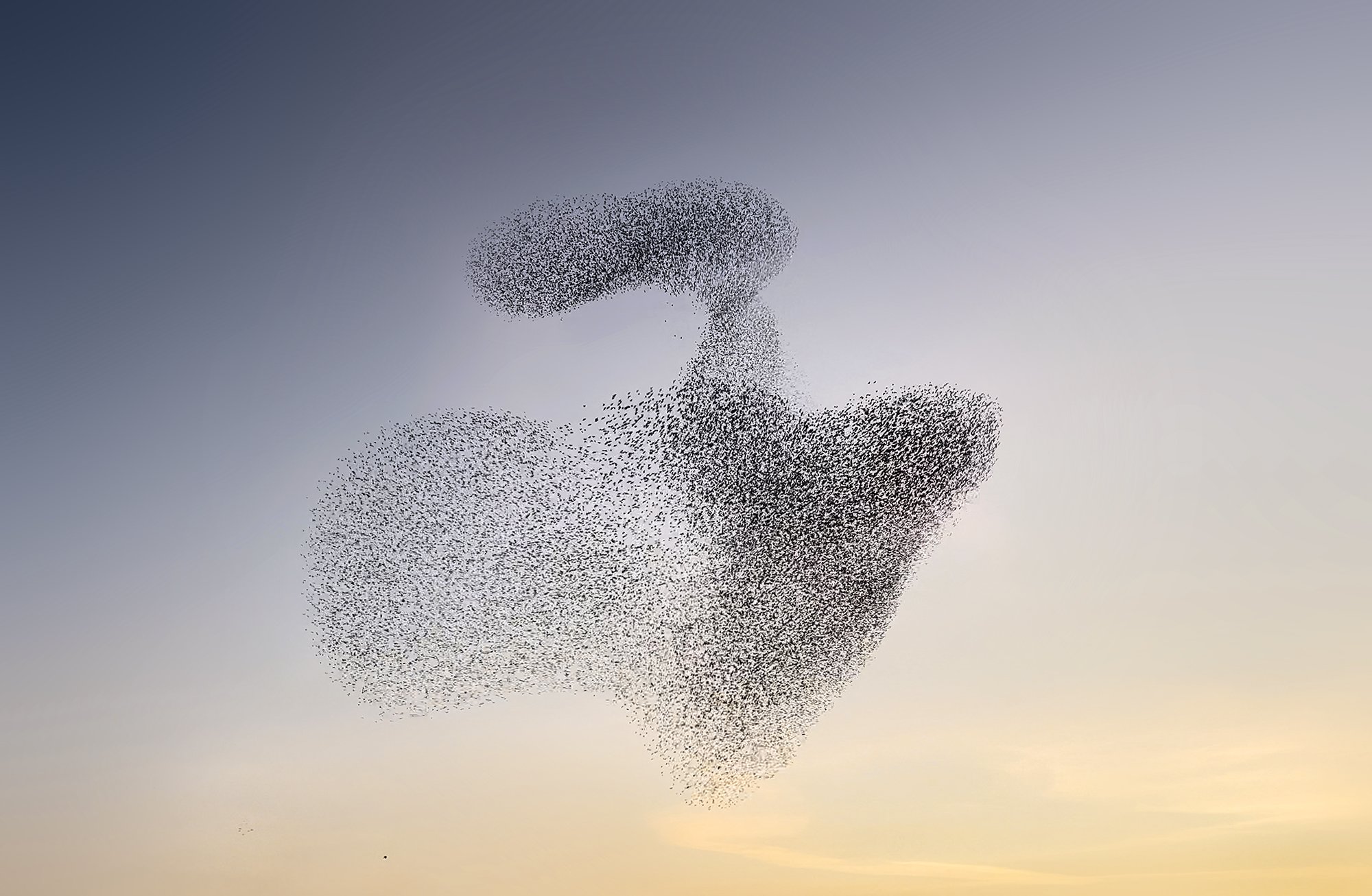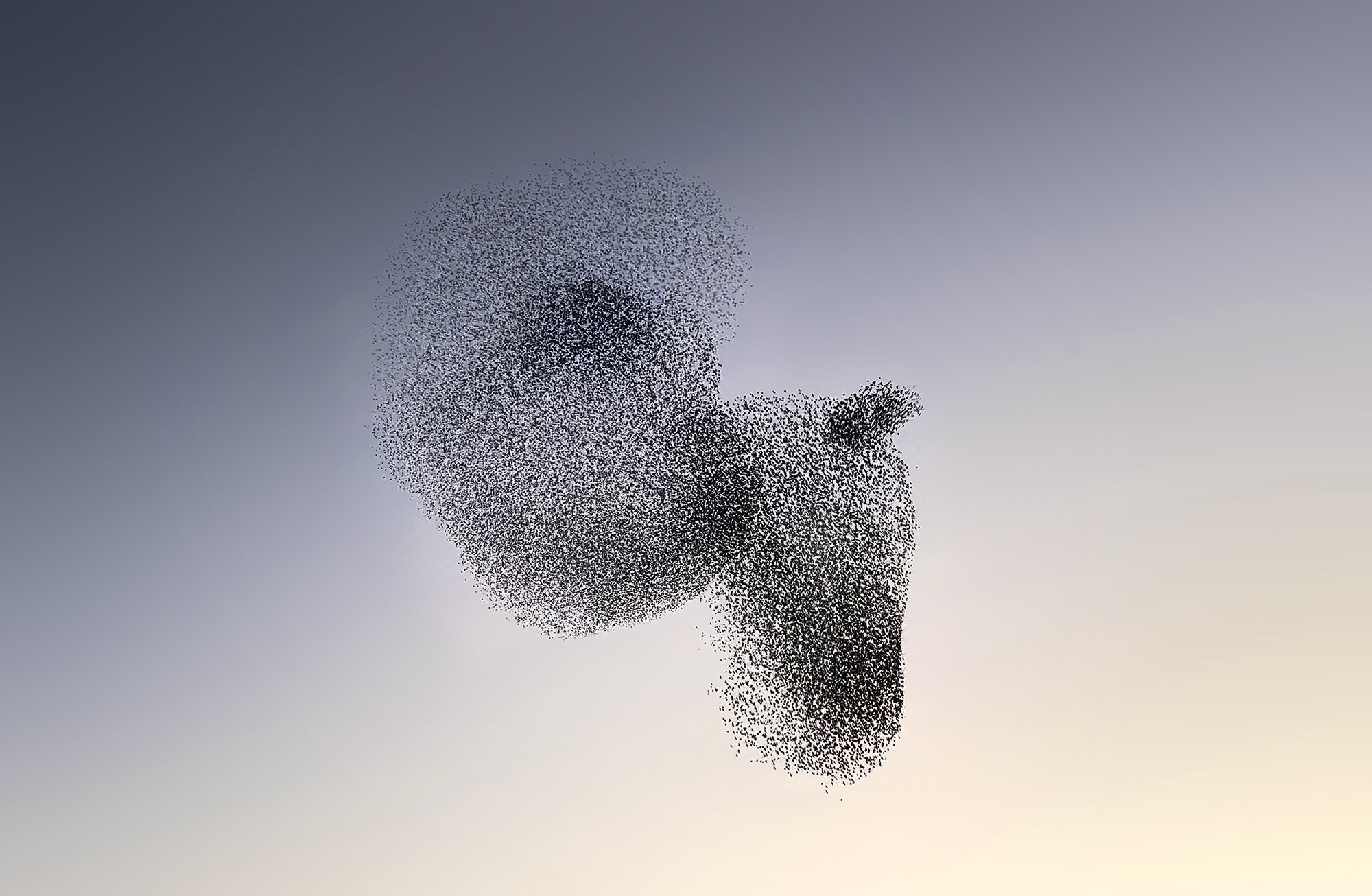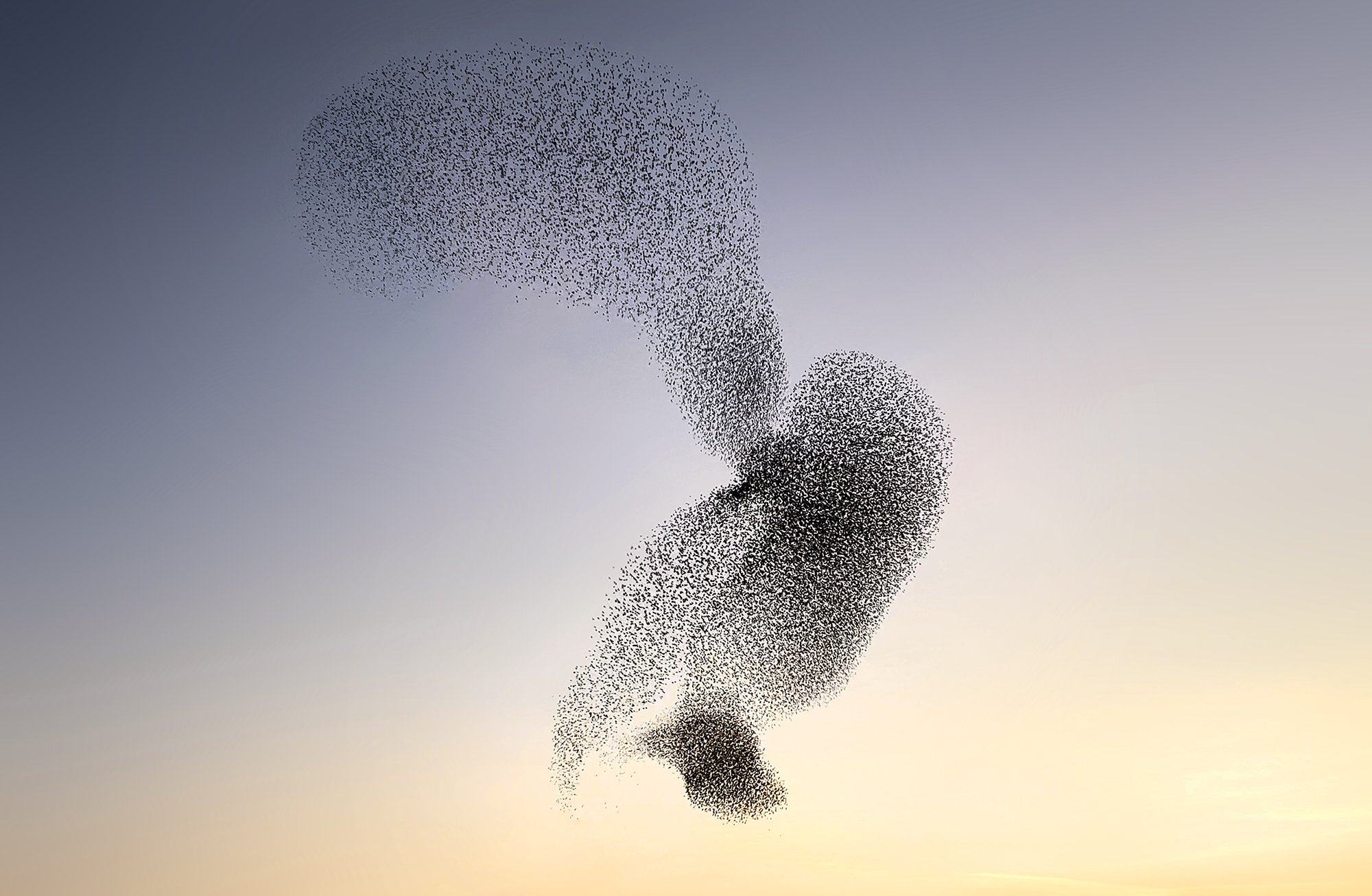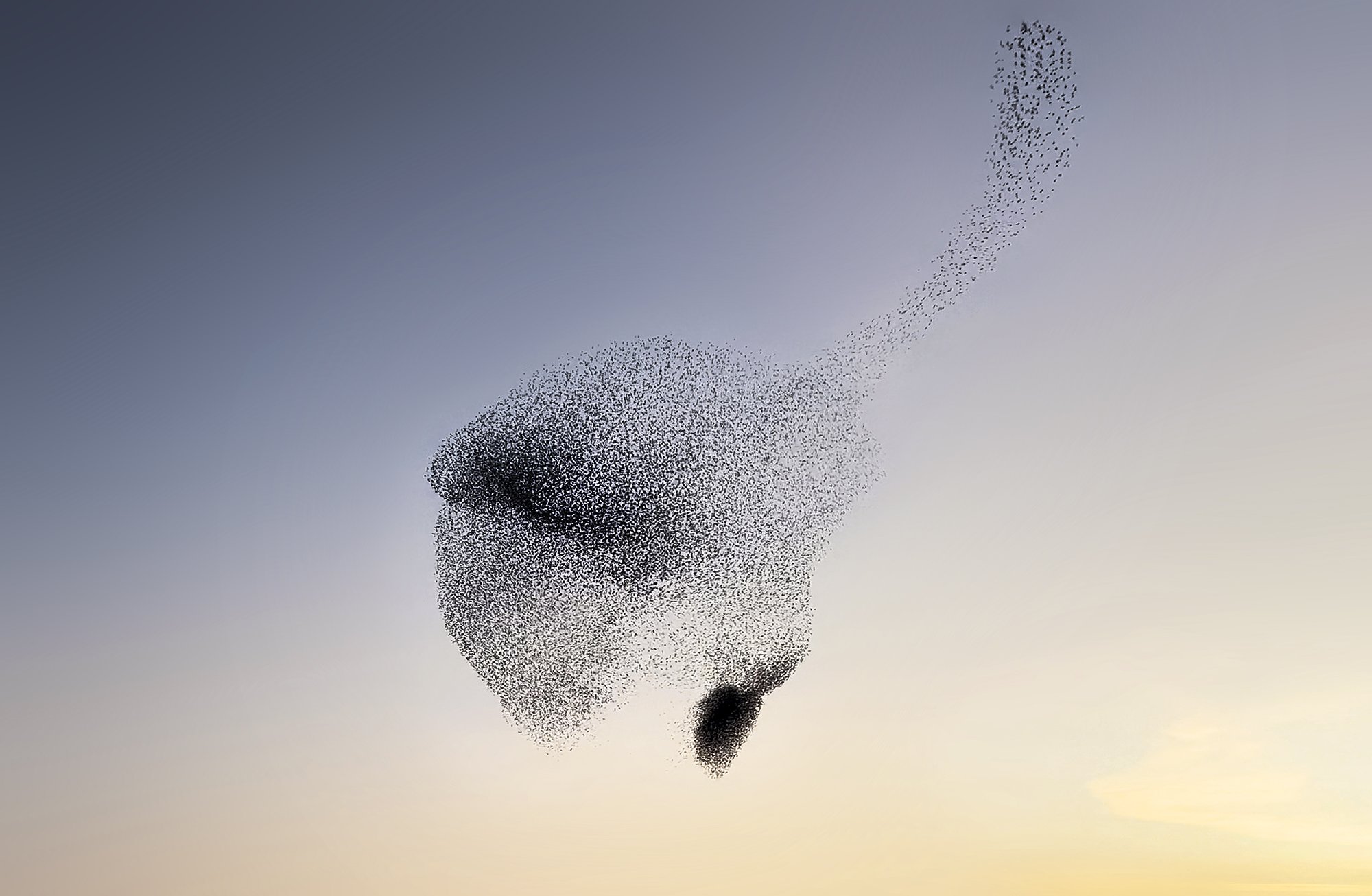I witnessed a truly magical spectacle - a murmuration of starlings in The Netherlands, close to my hometown Rotterdam. A breathtaking dance unfolded before my eyes as an astonishing 100,000 birds came together and performed astonishing acrobatics, weaving interesting shapes in the air. It was as if they were putting on a ballet performance in the vast expanse of the sky. The sound of their flight was incredible and felt like a massive tidal wave of wings being stirred by the gentle wind… Watch the YouTube video here.
As a landscape- and travel photographer, this is what I love most. To be able to experience the natural wonders of the world. In this blog, I will answer the four most frequently asked questions about the murmuration of starlings, in order to get an understanding of this breathtaking natural wonder that I have experienced.
1- What is a murmuration?
Murmurations are a mesmerizing phenomenon in nature where large flocks of birds, primarily starlings, move together in a coordinated manner through the sky. These displays are a breathtaking sight, with thousands of birds moving in synchrony to create mesmerizing patterns and shapes. While murmuration is most commonly associated with starlings, other bird species have been known to exhibit similar flocking behaviour, including blackbirds, dunlins, crows, and certain species of geese, swallows, and finches.
When small flocks are passing, they tend to converge towards a common destination, indicating the direction you should follow to see ‘the main’ group.
In addition to birds, other animals also exhibit collective behaviour that can be compared to murmurations. For example, schools of fish often swim together in coordinated movements and can form large, swirling shoals that are similar in appearance to bird murmurations. Additionally, insects, such as locusts, also exhibit collective behaviour similar to starlings, known as swarming. Swarms and murmurations both involve synchronized movement, but they differ in size and impact. Swarms can be large and harmful, while murmurations are smaller and admired. The way they work is also different.
Overall, these collective behaviours are thought to provide benefits such as improved safety from predators, enhanced foraging efficiency, and increased social bonding.
2- What would be your best chance to see this show?
To spot a mesmerizing starling murmuration, it's best to look during autumn and winter, specifically in the evening before and during sunset. They prefer to sleep in groups during these seasons, forming a flock as they settle in for the night. Seek out open areas like fields or wetlands with reeds, where they can fly without obstacles. However, keep in mind that murmurations are unpredictable, and you may need to search persistently for different locations each day.
To increase your chances of spotting a murmuration, here are some tips and recommended locations:
Based on my experiences, these birds gather in trees before taking off in unison. The commotion they create can be pretty noisy, so it's worth keeping your ears open to listen for their calls.
If you're outside, try looking up to spot small groups of birds passing overhead. When these flocks are gathering, they tend to converge towards a common destination, indicating the direction you should follow.
Bring your binoculars and look for a murmuration in the distance. On a clear horizon, you can spot them from far away!
Rural areas: starlings frequently roost in areas with open spaces, such as fields, meadows, and farmland that contain reeds and water.
Nature reserves: many nature reserves and wildlife areas have large populations of starlings, and some have birdwatching platforms and other facilities for observation.
Urban areas: starlings have adapted well to urban environments, and you can often find them on buildings, bridges, and other structures in cities worldwide.
Wetlands: starlings are drawn to wetlands, such as marshes and swamps, due to the abundance of food sources available during fall and winter.
Coastal areas: In some regions, starlings gather in significant numbers along the coast, providing an excellent opportunity to observe their aerial displays over the water.
The starlings often gather in trees before flying out to find a shelter for the night. You can hear them from a long distance!
Once they fly out, the tjilping stops and all you can hear is the wind along their wings.
3- Why do they flock together?
A murmuration is one of the most stunning natural wonders on earth, but have you ever wondered why they form such intriguing shapes? And do they always move in this coordinated manner? Not necessarily. The starlings engage in this behaviour to protect themselves from predators like birds of prey and falcons. By moving in a synchronized way, much like a school of fish in the ocean, they can confuse and distract their potential attacker. In fact, if you observe closely in the video, you can see a bird of prey hunting the starlings.
The starlings protect themselves from predators like birds of prey and falcons.
4- Why do they not collide in mid-air?
Thankfully, they don’t collide. After research, they have found evidence that each starling in the flock communicates with just 6 or 7 starlings. They follow their cues and copy their movements. So when one bird moves, its nearest neighbours will do the same, and so on, which propagates a wave-like movement that pulses through the entire flock. Their metabolism, and thus their reaction time, is so fast that they can adjust quickly. Since they all have the same fast, but equal, reaction time, they are each able to keep the same position relative to the entire group and the birds near them, as the group changes direction. Did you know? The larger the species of bird, the slower their reaction time and manoeuvrability...
Enjoy Nature Responsibly
I hope you feel inspired to go out there to find and enjoy this wonder of nature to now see for yourself! But as you do, it's important to keep in mind the impact that we have on the environment and its inhabitants. When it comes to birdwatching and photography, being mindful of our actions can make all the difference in protecting and preserving these beautiful creatures.
Avoid disturbing them by keeping a safe distance and refraining from using flash photography or making loud noises. With patience and careful observation, you can witness the breathtaking spectacle of a starling murmuration too!
Watch the birds dance!
This video was captured near a village called Alphen in The Netherlands, on a late afternoon during sunset in January 2021. After several attempts to find the perfect location to photograph them, the birds suddenly started ’dancing’. To capture the shapes, I decided to create a movie with my iPhone 12 Pro Max.
Video licenses are available!
Looking for video licenses or fine art prints to enhance your creative projects? I am pleased to offer a wide selection of licenses for this video, including footage from a variety of lengths and sizes.
Fine art Prints and licences available
I have created a series ‘Bird Creatures’, which is also available in a collection of fine art prints that are perfect for adding a touch of elegance and sophistication to your home or office. A selection is available in two sizes to suit your unique taste.
Would you like to collaborate with me? Please send me an email at info@claireonline.nl
Hello, World!











